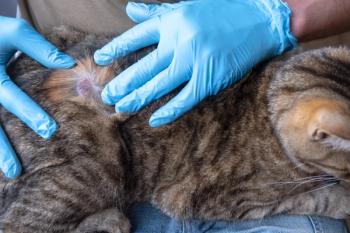
Commentary: Perhaps we should be careful what we wish for
While some vets are convinced that emulating medical doctors is the salvation of veterinary medicine, some medical doctors aspire to practice like veterinarians.
I always thought the expression about grass being greener on the other side of the fence was an advertising slogan for lawn-care products. But it seems that, while some vets are convinced that emulating medical doctors is the salvation of veterinary medicine, some medical doctors aspire to practice like veterinarians.
A recent article covering the 2008 Pet Healthcare Industry Summit about veterinary manpower issues reports that John Payne, Banfield’s president and CEO, claims there is no shortage of veterinarians. In his view, the real shortage is “veterinarians who can see enough patients,” and he suggests the need “to train veterinarians who can see 24 to 30 patients per day” (compared to the average vet who sees only eight to 10 or 12 patients per day).
Dr. Joseph Bielitzki, COO of LensAR Inc,, praises pediatricians who see “about 40 children in a day.” And Dr. John Albers, executive director of the American Animal Hospital Association (AAHA), notes “a lot of inefficiency in delivery of companion-animal care” as the prime reason for any shortage.
Ironically, there is a growing nationwide group of medical doctors who want to see fewer patients per day, are tired of insurance hassles and who don’t accept any type of third-party pay. Enter “boutique medicine,” replacing the insurance-dependent practice model with a flat yearly fee plan (paid by the patient) and offering unhurried appointments, house calls, annual physicals and access to the doctor 24/7.
Dr. Harry A. Oken, a physician with Charter Internal Medicine in Columbia, Md., for 20 years, complains that “primary-care doctors are seeing 30 to 40 patients a day; that’s too many. It’s about having the time to spend with your patients and keep them healthy.”
Dr. Edward E. Goldman, founder of MDVIP (a Florida-based company that organizes boutique practices), wonders how he can properly manage a diabetic patient in a 10-minute appointment. Dr. Joseph Zebley, a three-year member of MDVIP, reports reducing his patients from 2,500 to 600; he won’t see more than 15 per day.
According to the Government Accountability Office, in 2005 there were 146 doctors nationwide with boutique practices. However, MDVIP claims to have 260 doctors alone in 24 states and Washington, D.C. Everyone agrees that the trend is growing.
And so, like a dog chasing its tail, we have come full circle.
On the one hand, we have veterinarians who (often) don’t receive third-party payments seeing 10 to 12 patients per day and wishing for more insurance with 30 or more patients per day. On the other hand, we have medical doctors currently paid by third parties seeing 30 to 40 patients per day and wishing for no insurance at all with 15 patients max per day. Ain’t life funny?
Perhaps before we all rush off to practice like “real” doctors, we should sit down with a few of them to discuss life. And perhaps we should all pause a moment to consider what we already have and covet a bit less what we do not.
I’m a veterinarian, and I need to go cut my grass now.
Newsletter
From exam room tips to practice management insights, get trusted veterinary news delivered straight to your inbox—subscribe to dvm360.






